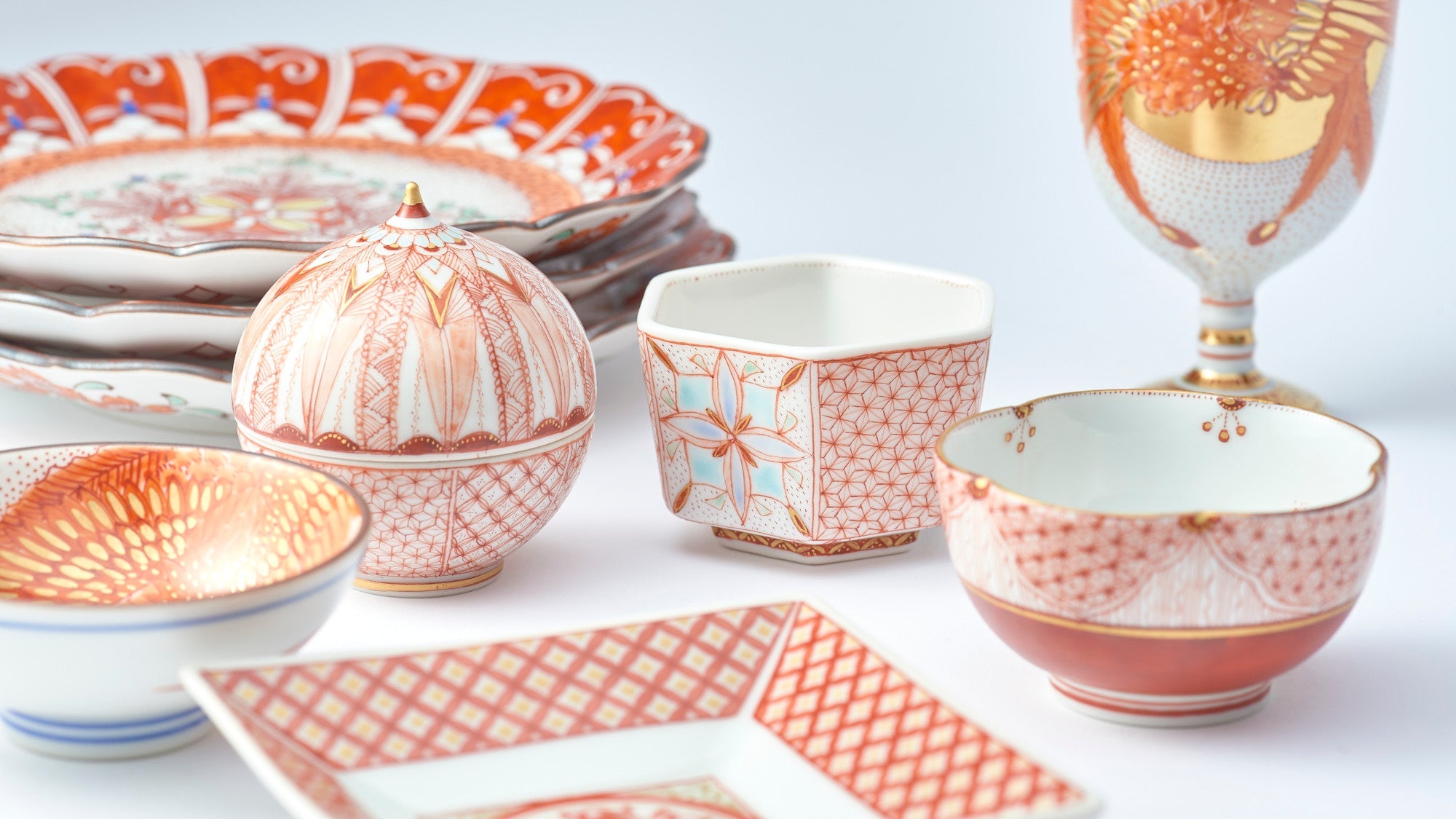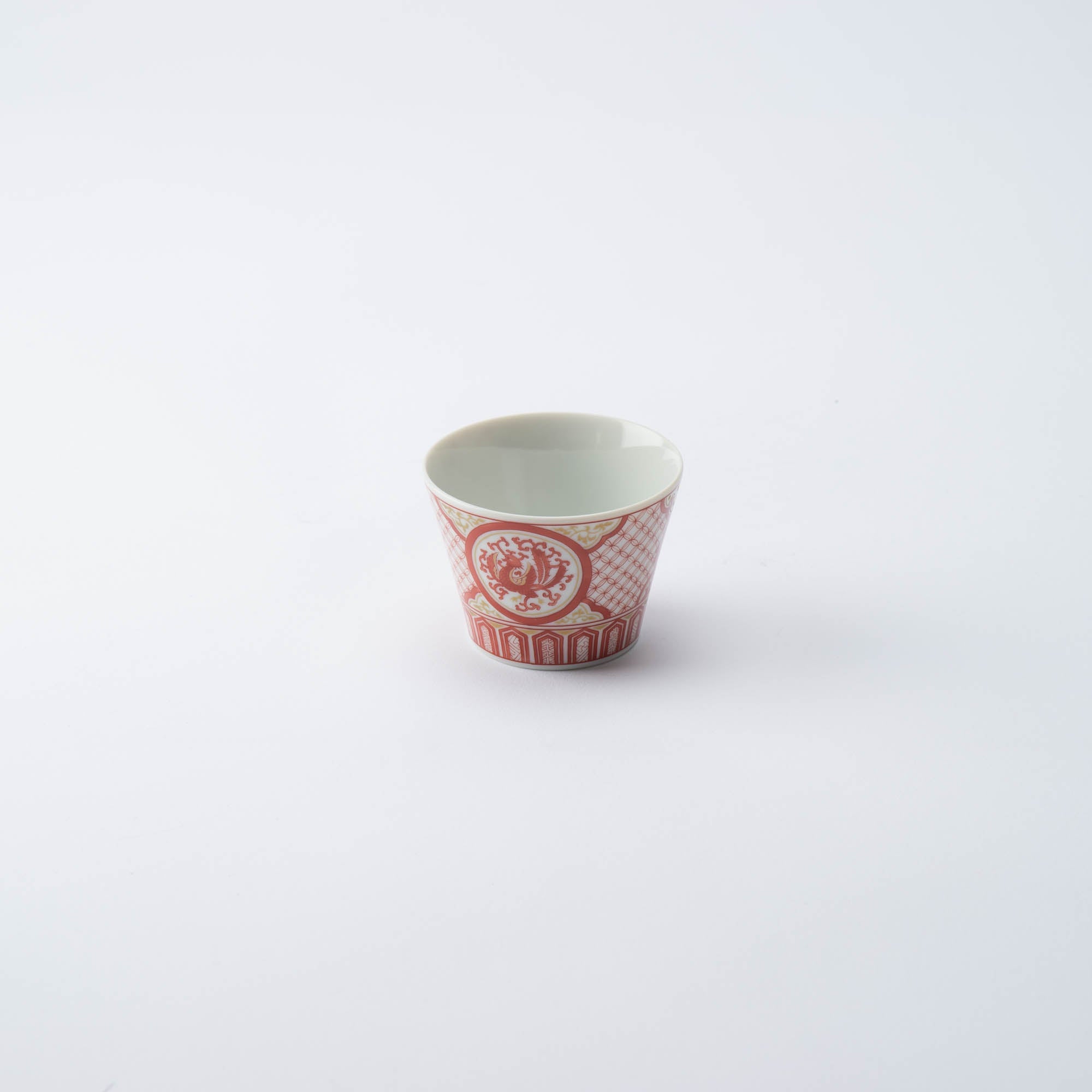

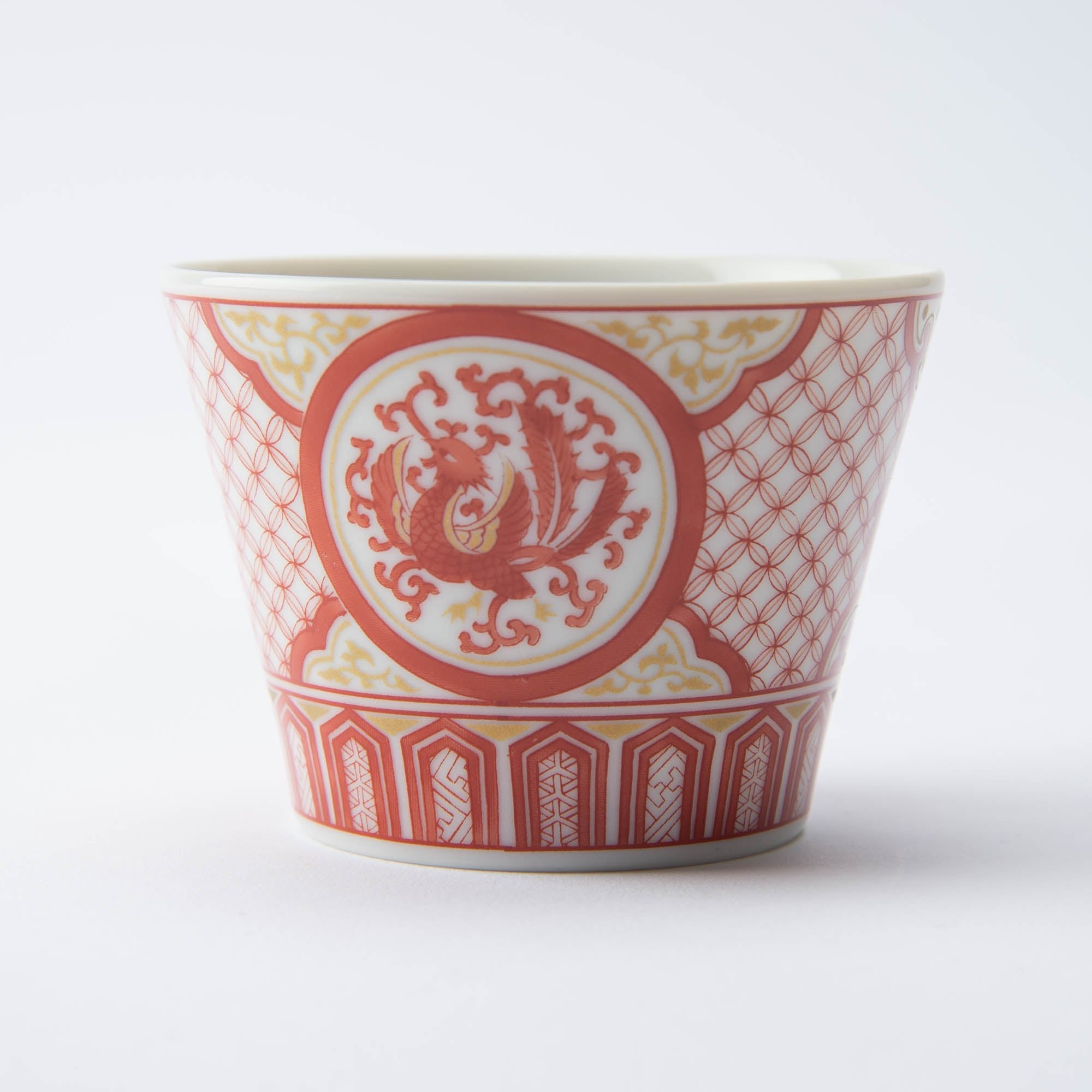
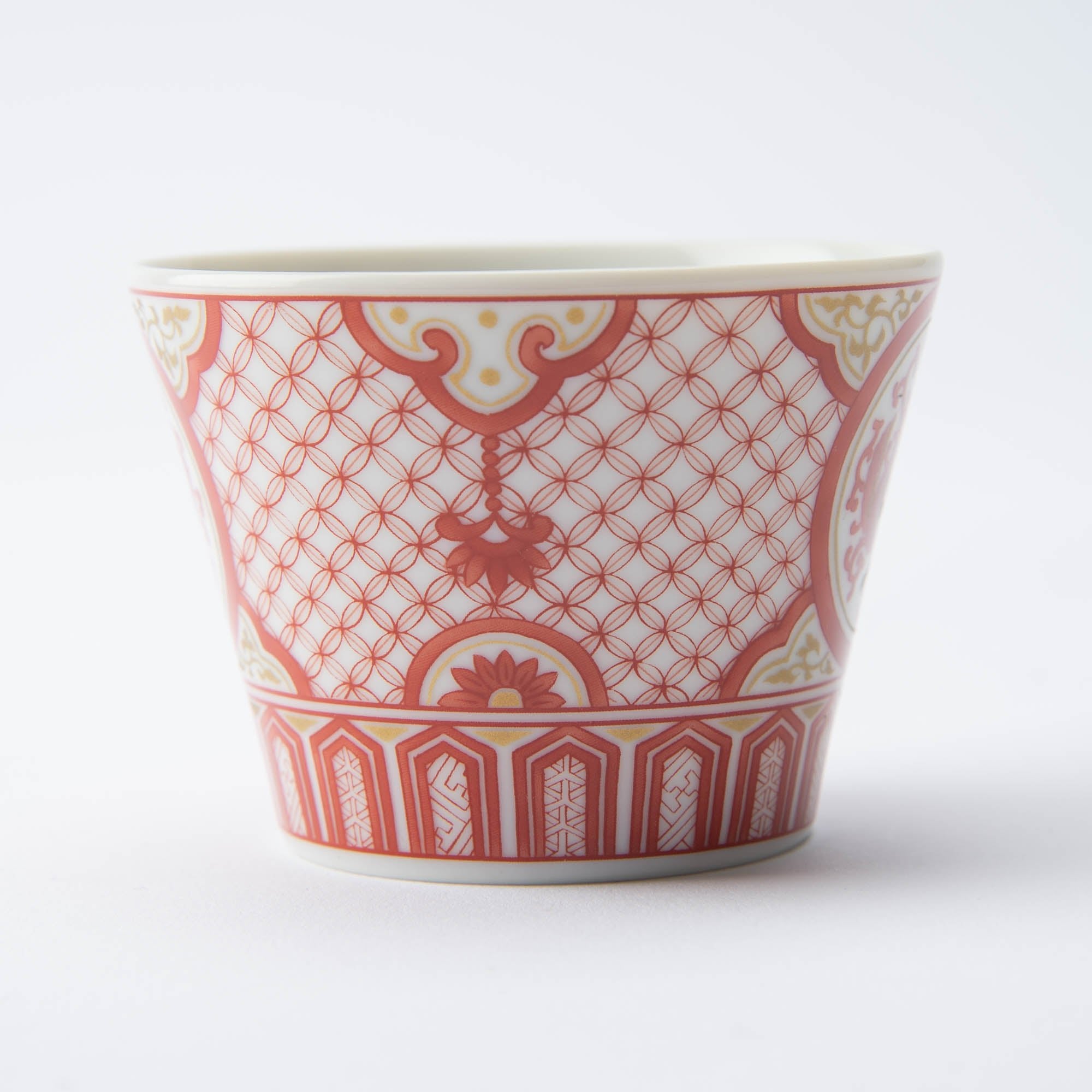
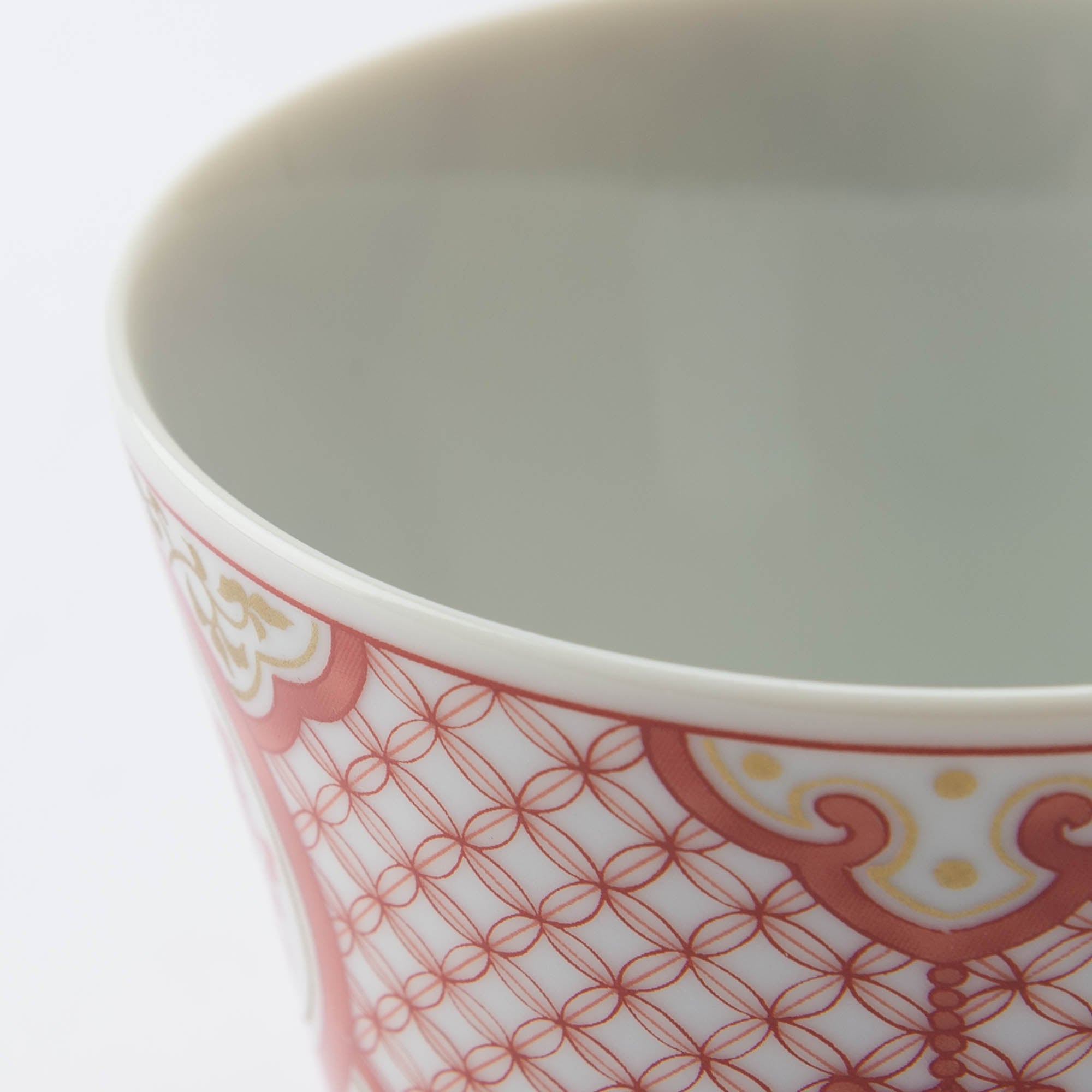


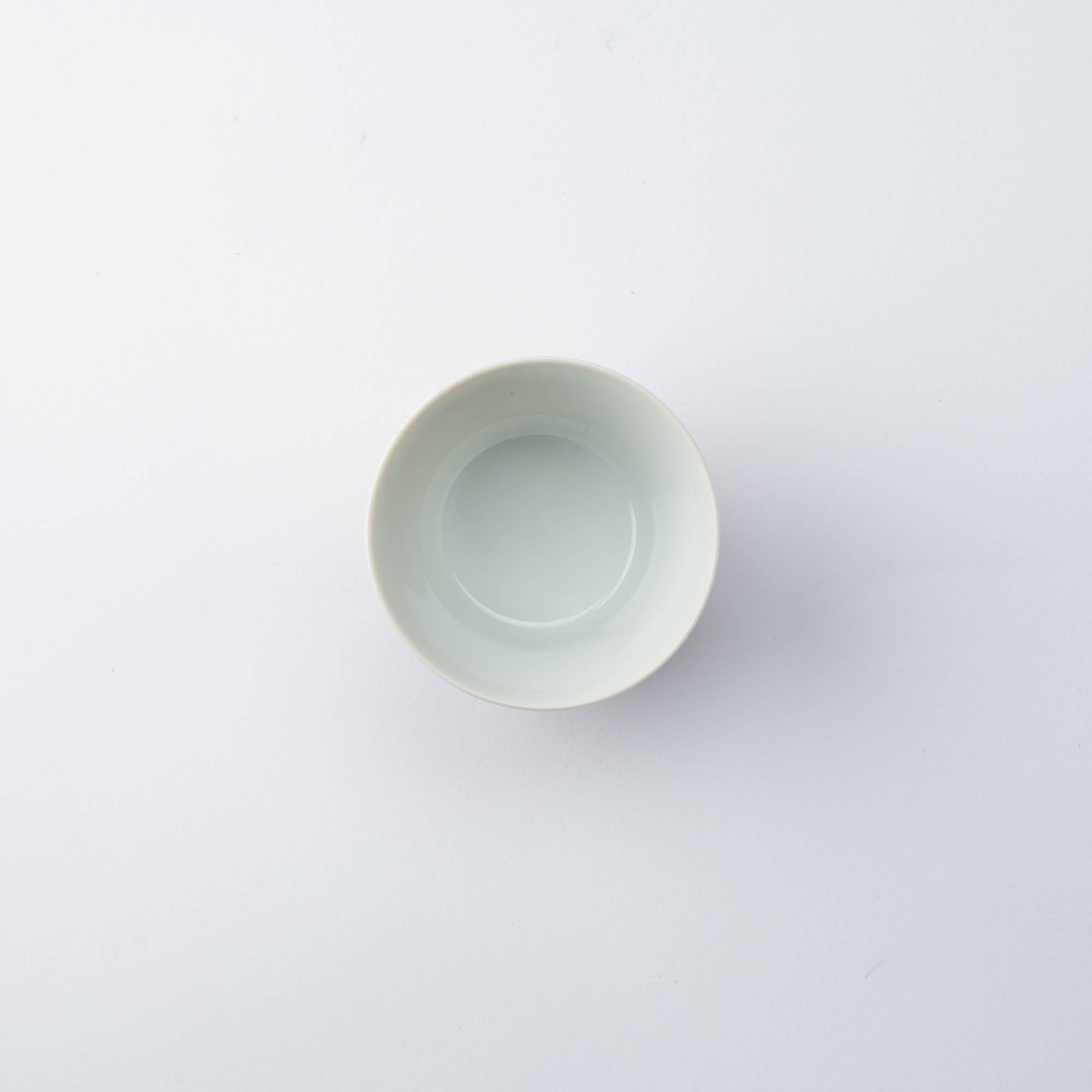
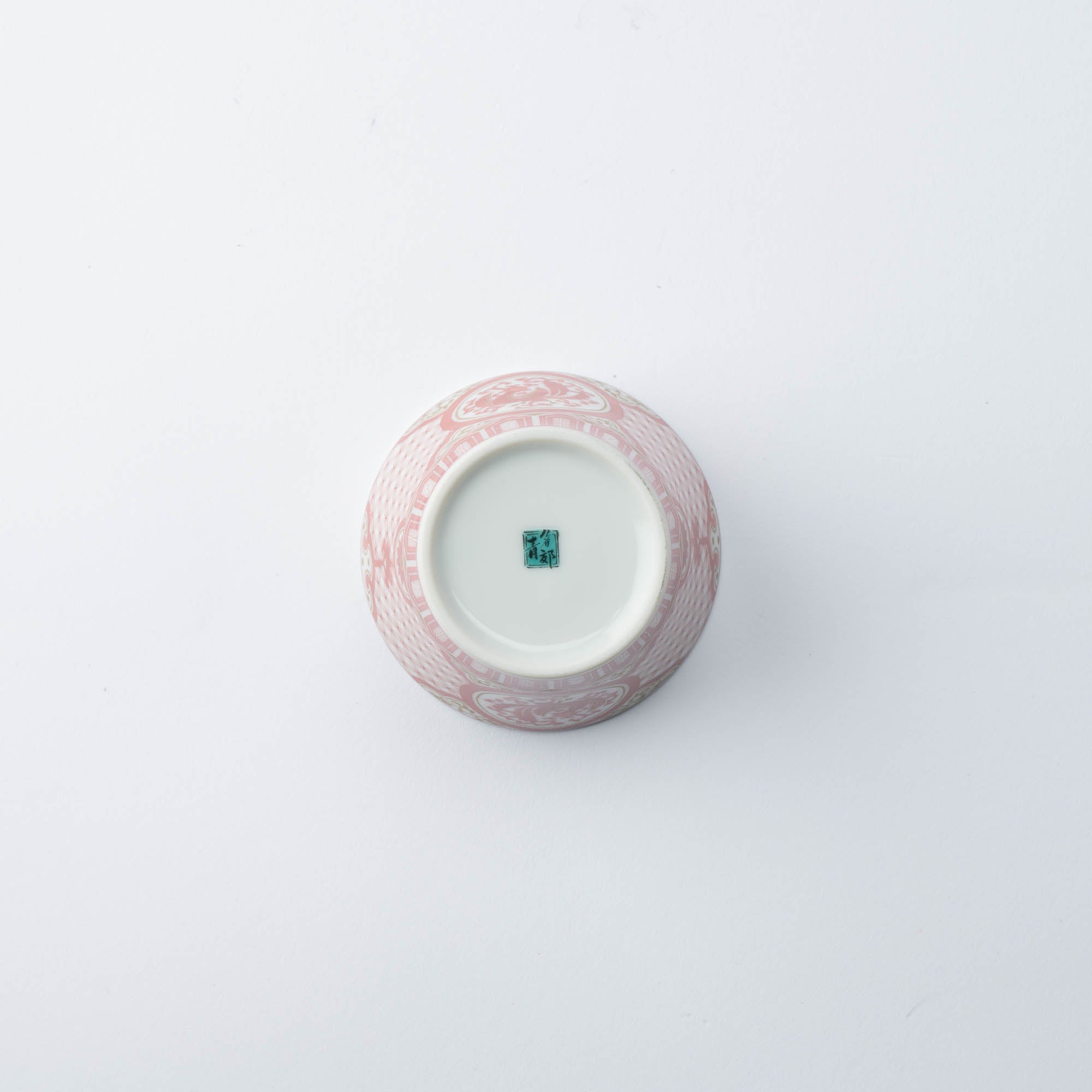
Akae Soba Choko Cup
Estimated Shipping Widget will be displayed here!
This soba choko cup features the motif of a phoenix in bright red colors and gold. Detailed figures drawn in red is characteristic of this Iidaya and akae style of Kutani ware.
Originally designed as a soba choko cup, you can serve soba dipping sauce in this cup. But with its versatile size, it can also be used as a soup cup, dessert cup for ice cream, yogurt, fruits, and many other small dishes served at the table. It is also perfect for putting Japanese sweets such as anmitsu and tokoroten.
Furthermore, put a small portion of food or condiments inside this cup, place it on a larger plate or in a bento box for a more stylish and sophisticated food presentation.
DETAILS
| Quantity | 1 |
| Size | D 7.2 cm (2.8 in) x H 5.2 cm (2 in) |
| Capacity | 132 ml (4.5 fl oz) |
| Material | Porcelain |
| Microwave | Yes |
| Dishwasher | No |
Maker / Brand
Seikou Kiln, founded in the early Taisho era (1912–1926 CE) in Nomi City, Ishikawa Prefecture, has long been dedicated to the art of Japanese overglaze painting for Kutani ware. Through years of research, the kiln perfected a high-quality technique for transferring designs and patterns using in-house printed sheets. This method preserves the transparency of glassy glazes and the depth of thick overglaze paints, achieving the same richness as traditional hand-painting. Their work has earned prestigious accolades, including recognition in the Japan Tourism Agency's Charming Japanese Souvenir Contest.
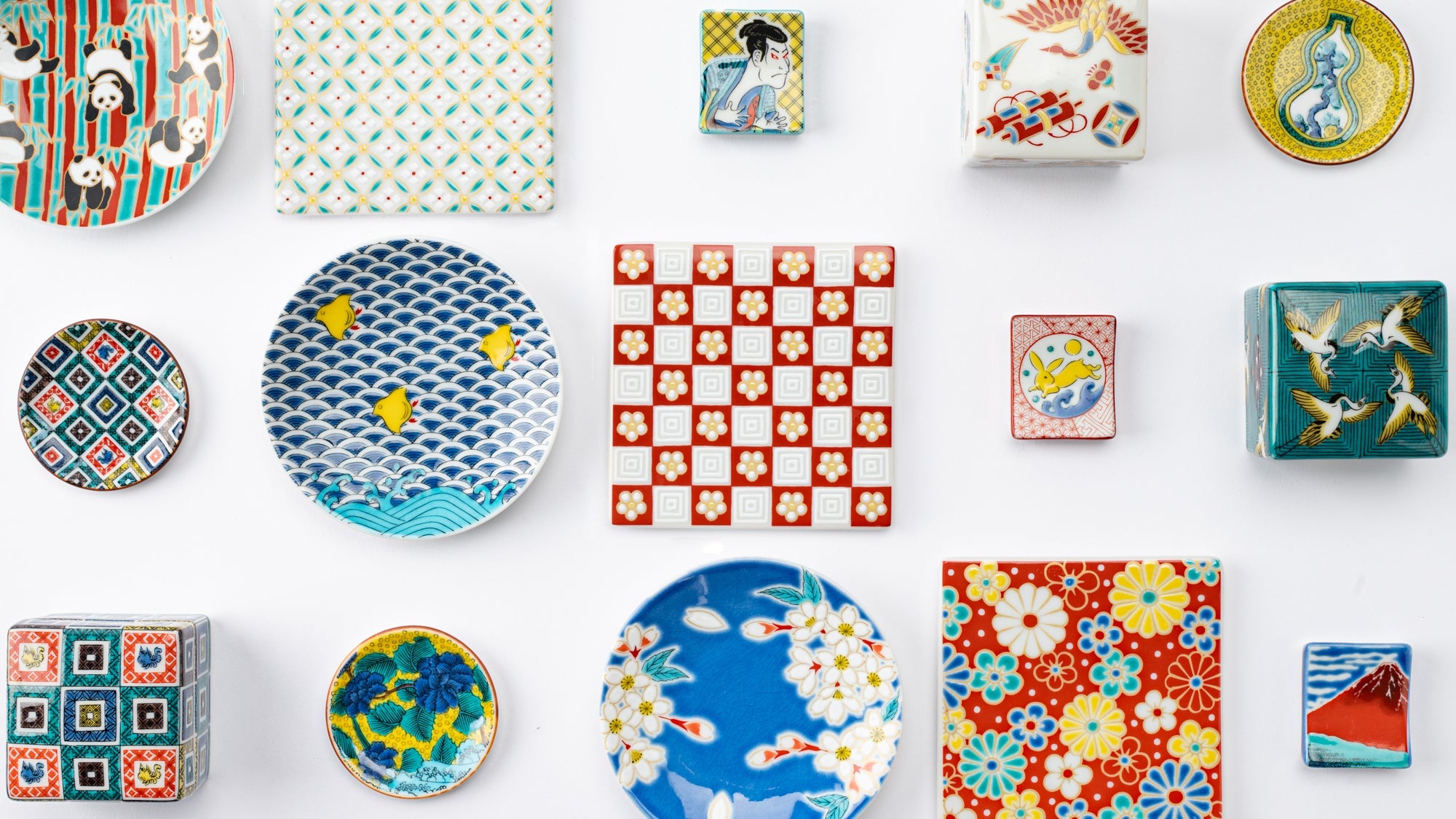
Crafts
Kutani ware is a pottery produced in the Kaga region of Ishikawa Prefecture, with a history spanning over 350 years. It is characterized by the heavy brilliance of the five colors of navy blue, red, purple, green, and yellow that are applied to the bold and daring lines. Its long history has evolved through the tireless efforts and enthusiasm of people who have sought innovation while maintaining tradition.
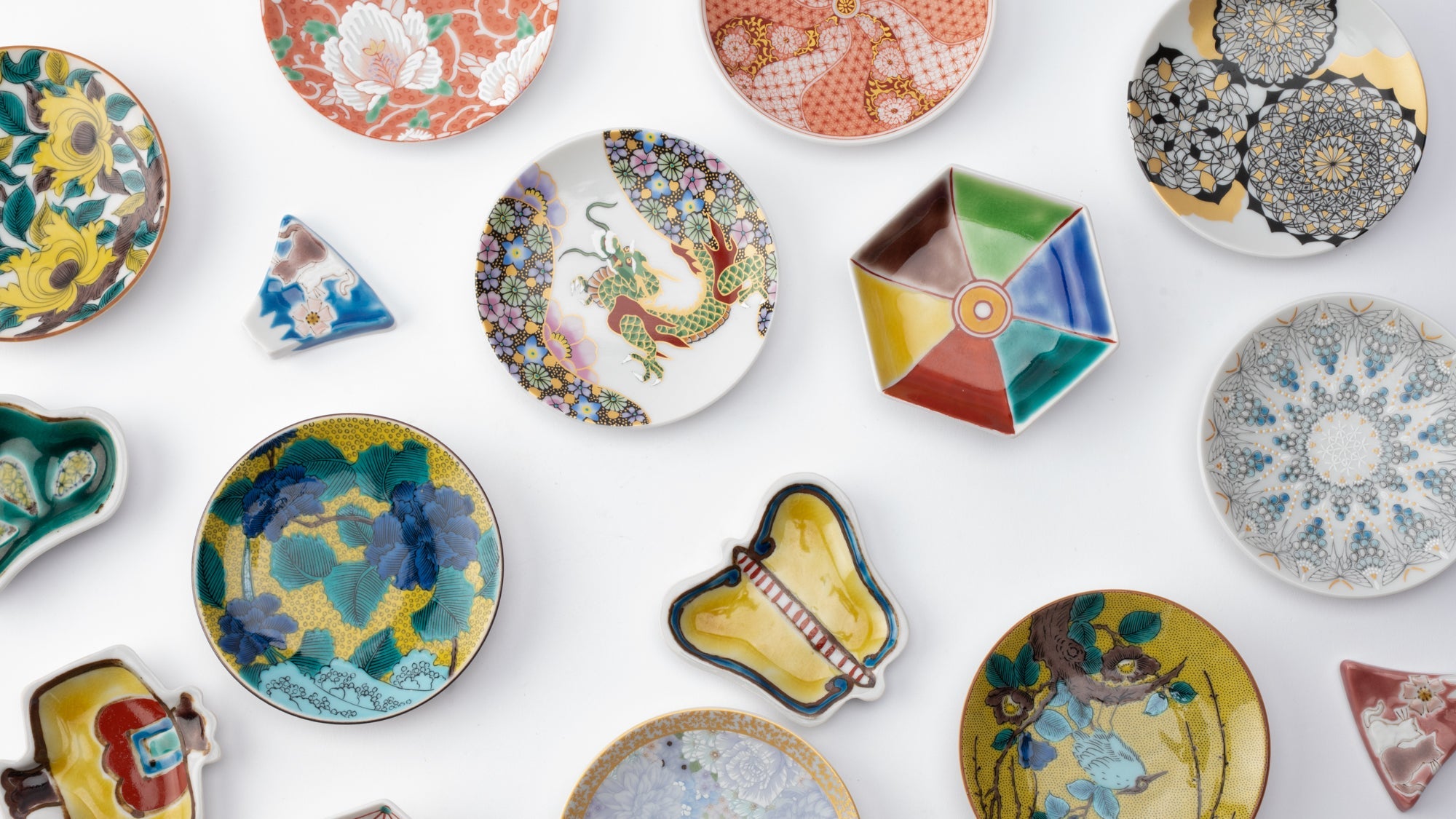
Choose options









Soba Choko Cups
Soba choko cups are primarily designed to hold dipping broth accompanying soba, but they are also used for drinking tea and sake. Soba choko on the larger side are similar in size to yunomi cups, making them just right for casual tea drinking, while those on the smaller side are closer to guinomi cups, perfect for elegant sips of sake.
Regardless of how you use them, the versatility and charm of a soba choko make them a stylish and convenient addition to any table.
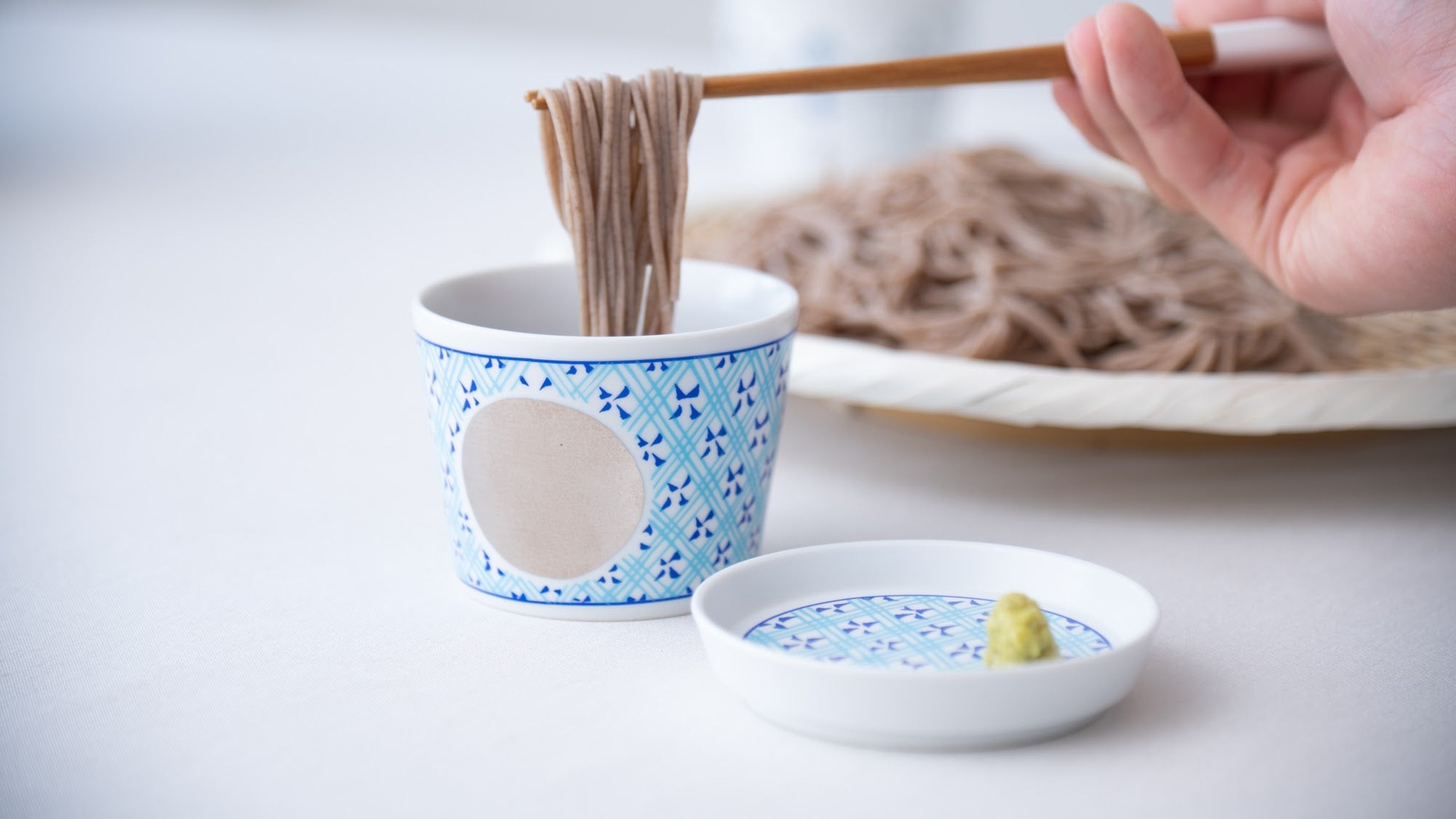
Akae
Akae, or red painting, is an overglaze decoration that primarily uses red, complemented by colors such as green, purple and blue. In China, this style originated during the Song Dynasty (960 CE–1279 CE), while in Japan, it was introduced by Sakaida Kakiemon during the Shoho era (1644 CE–1648 CE) and later found its place in Kutani ware.
In Kutani porcelain, akae-saibyo is particularly famous. Akae-saibyo literally means "fine painting in red." Using an extremely fine brush, each line is drawn on the surface of the vessel with exquisite detail, creating breathtakingly intricate patterns.
